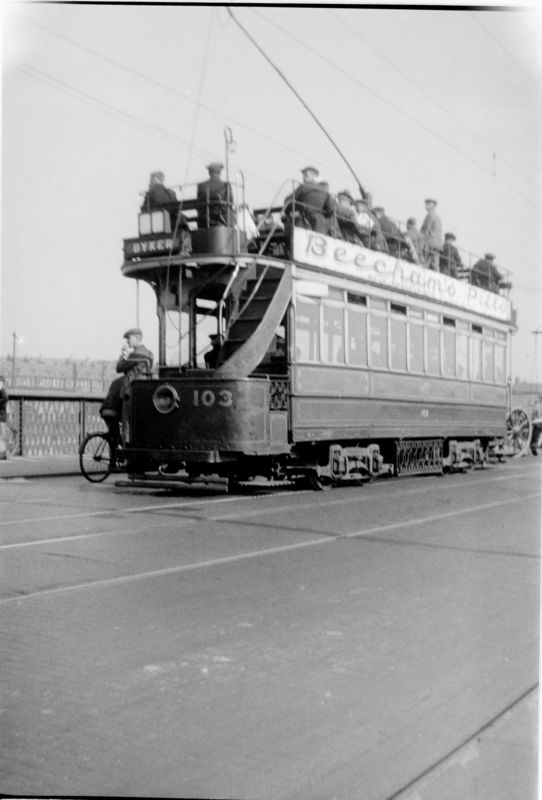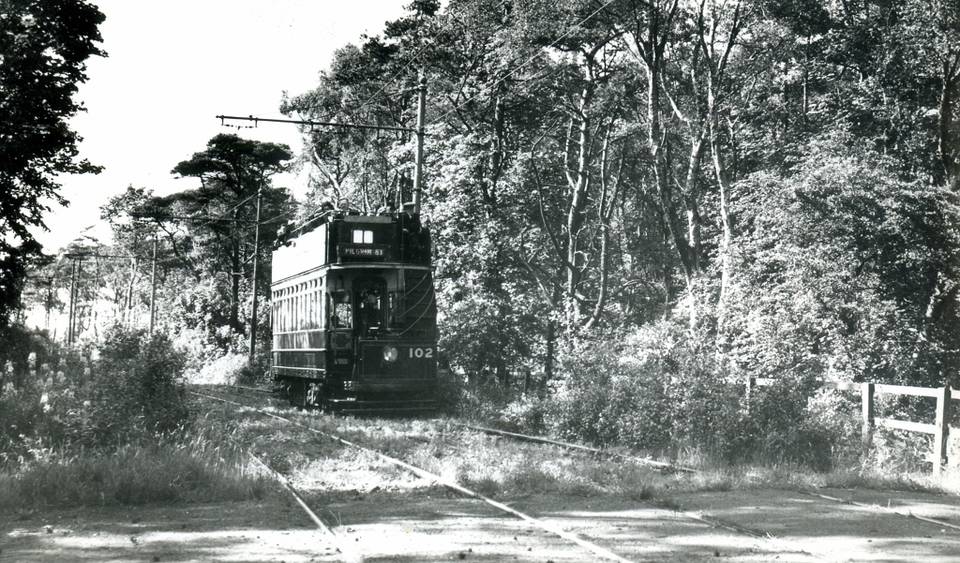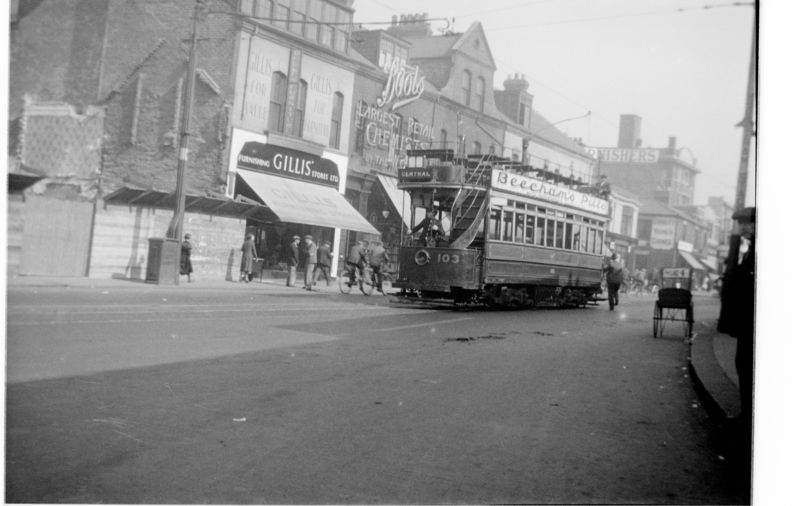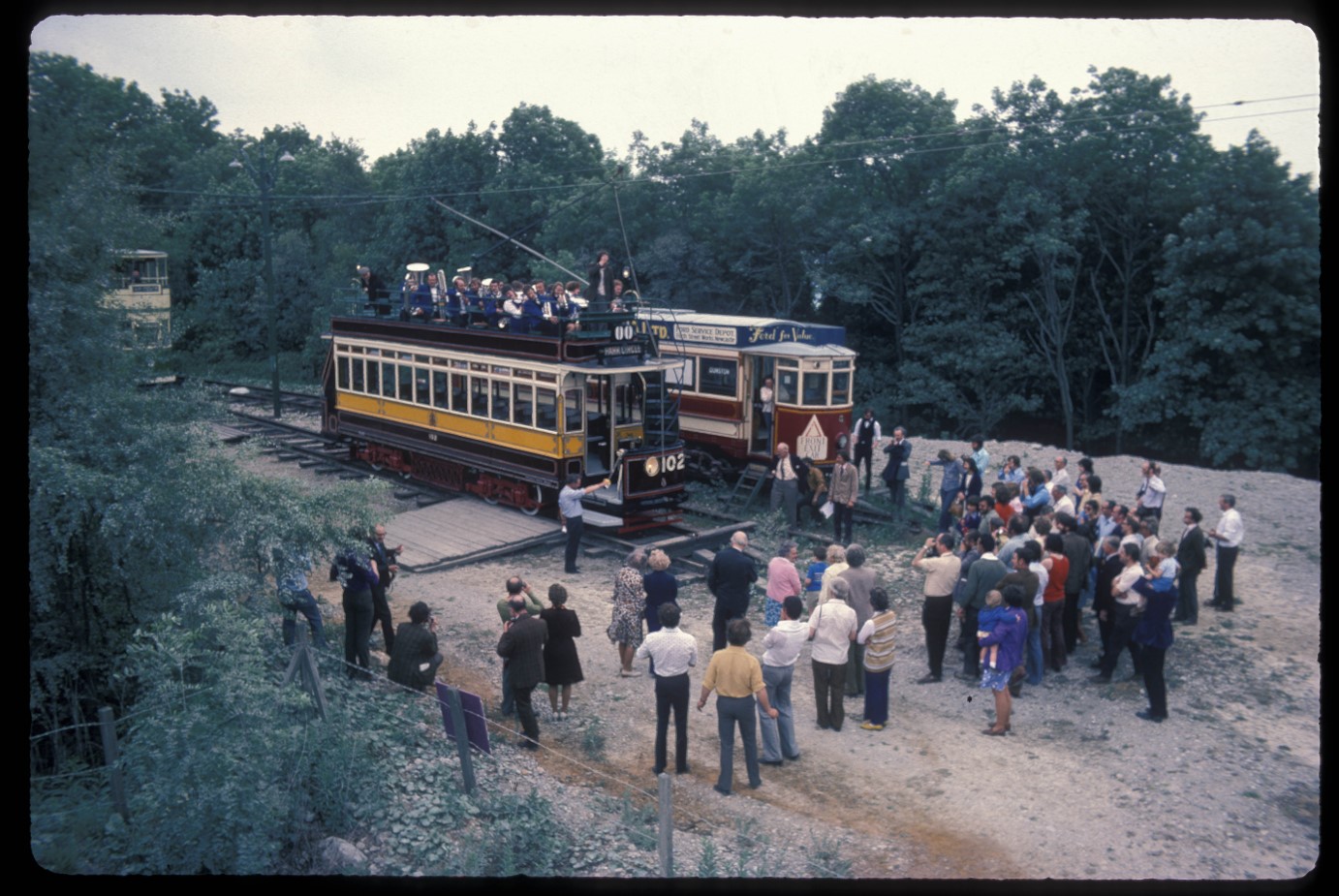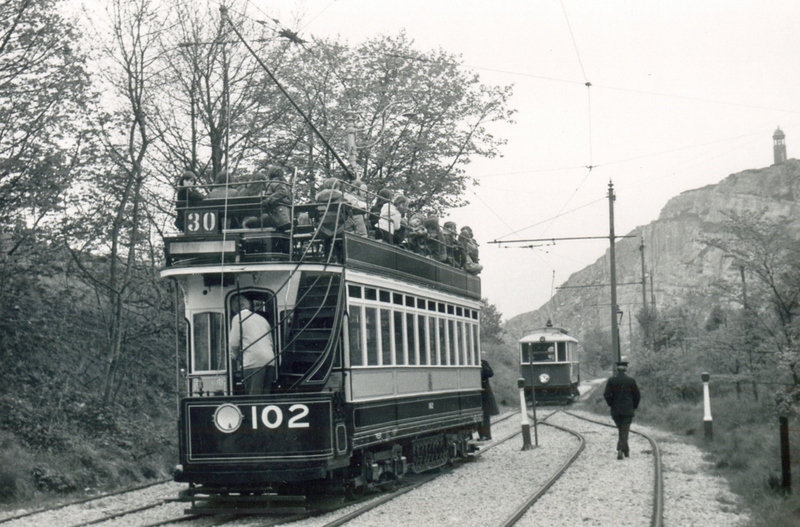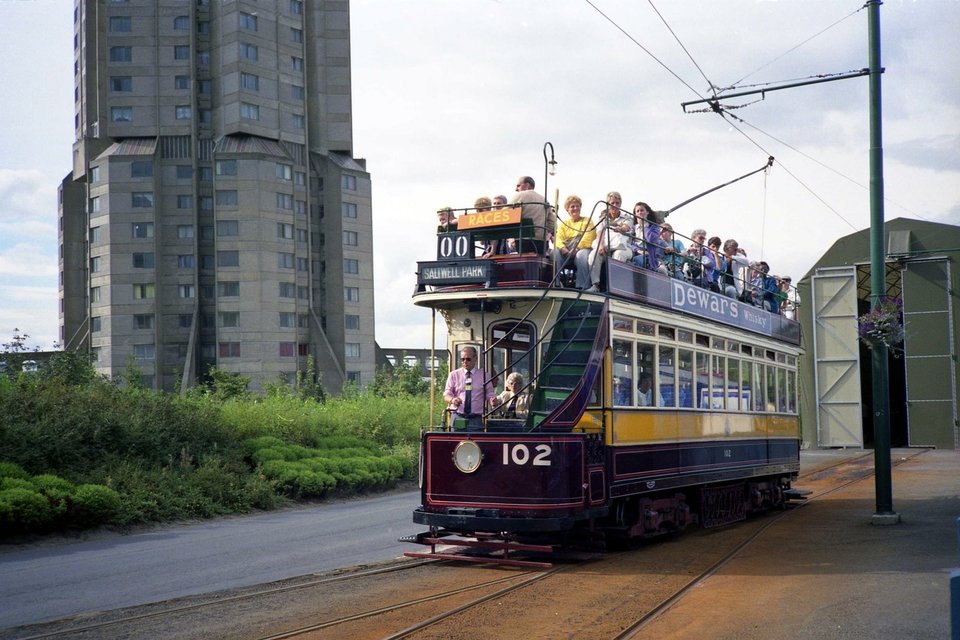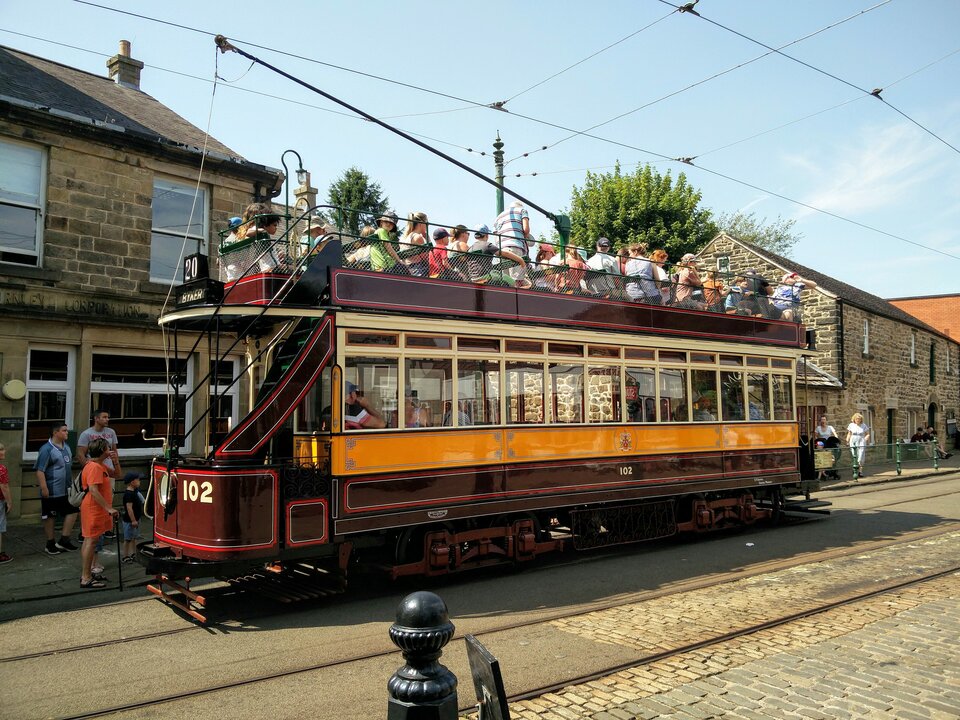Newcastle Corporation Transport No. 102
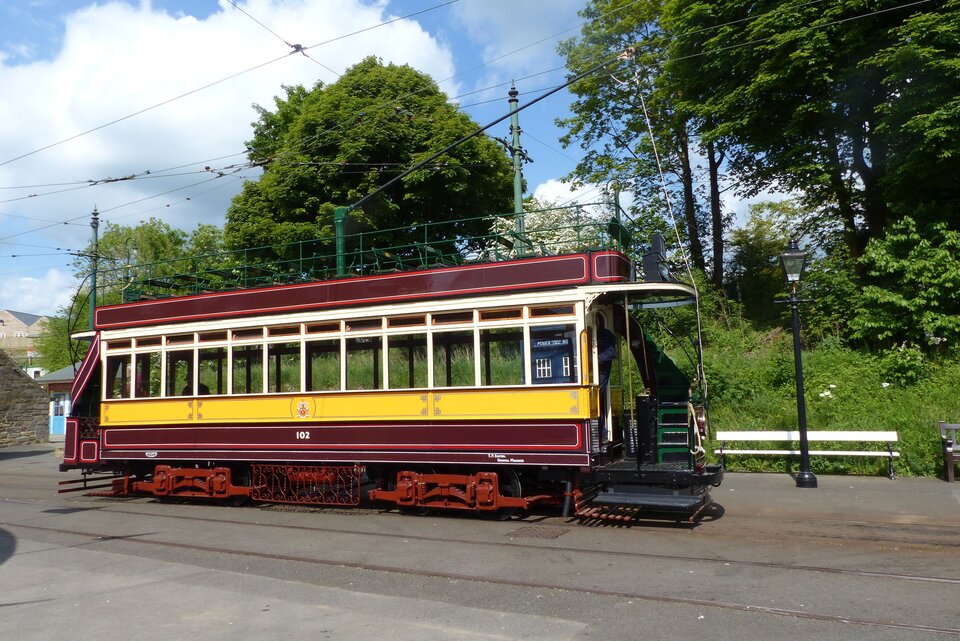
Newcastle 102 on a test run at Town End, photo: Jim Dignan on 26th May 2023
Newcastle 102 has been described as a tram that should never have been built at all; and its current guise is a product of evolution and adaptation rather than conscious design. The original concept dates back to the early days of tramway operation when several North American tramways operated fleets of summer and winter-bodied tramcars that often shared the same trucks and equipment.
This idea evidently appealed to Newcastle Corporation, which ordered from Hurst Nelson of Motherwell in 1901 thirty single-deck open-sided tramcar bodies with clerestory roofs that could be placed in summer on the bogie trucks of some of their saloon single deckers. The original design of these bodies – known on the Continent as ‘jardinière’ – consisted of normal end platforms and centre gangways, but very low side panels that were equipped with roller shutters for use in bad weather.
Unfortunately, the bodies were delivered in the late summer and autumn of 1902. This was too late for them to be used that year and, while waiting for the next summer season to arrive, the transport committee appear to have had a change of heart that was no doubt prompted in part by local climatic considerations. Accordingly, they decided to rebuild the ‘spare’ bodies as open-topped double deck bogie cars. These would not only be better suited to Newcastle’s unpredictable weather, at least for lower deck passengers. but also offered much higher occupancy levels.
Specification
- Type of tram
- Open-topped double deck electric passenger tram with enclosed lower saloons (class F)
- Livery
- Crimson lake and ivory with lemon chrome panel lining
- Seating capacity
- 84 (48 on top deck; 36 downstairs with additional authorised standing room for 18 passengers in the lower deck saloon) Originally built in 1901 as a single-deck tramcar with seating for 36 passengers.
- Date built
- 1901
- Date entered service
- End of 1903 after extensive rebuilding
- Manufacturer of body
- Single deck tramcar bodies originally supplied by Hurst Nelson. Rebuilt by Newcastle Corporation incorporating metal components obtained from Brush Electrical Engineering Co. of Loughborough.
- Manufacturer of truck
- Brill 27G2 bogies
- Gauge
- 4’ 8½”
- Motor
- 2x GE 203N 40hp Originally equipped with 4x25hp GE 58 motors
- Controller
- BTH B18 Originally equipped with B13 controllers
- Current collector
- Trolley
- Modification
1903 – rebuilt by Newcastle Corporation; the single-deck body was originally open sided and built to a jardinière design. It was rebuilt as an open-topped double decker and placed on Brill 27G bogie trucks.
1933 – original hand brakes replaced by B.T.H. air brakes and B18 controllers replaced the originals. New motors were also provided to replace the original 30 hp motors.
1939 the original wire mesh above the upper deck decency panels was replaced by higher solid timber panelling. Rewiring following an electrical fire- Withdrawn from service
February 1949
- Subsequent history
Following withdrawal no. 102 was temporarily housed in Bury before being put on open-air display in 1958 at the Montague Motor Museum in Beaulieu.
- Restoration history
The tramcar was then moved back to its home turf at Byker Depot for restoration in March 1967, though this task was only completed after a further move to the museum’s off-site storage facility in April 1970. Its final move, to Crich, took place in 1975.
Was initially restored to operational condition but was out of action with a broken axle between 2000 and 2024.
- Current status
- Now restored once more to operational condition, it was commissioned for service in July as part of the operational fleet during the current season.
- Date started operating at Crich
- 1975. Has operated in 11 seasons, prior to 2000 but then, after a lengthy delay, began operating again in July 2024.
- Total mileage covered at Crich
- 5,304 at Crich plus 1257 at Gateshead Garden Festival in 1990.
- Current location
- Museum workshop
- Future plans
Has recently been comprehensively overhauled in the workshop and has resumed its place as part of the operational fleet.
- 1901 – 1903Undergoing reconstruction before entering service
- 1903 – 1949Operational on original tramway
- 1949 – 1958In storage
- 1958 – 1967On display at Montagu Motor Museum in Beaulieu
- 1967 – 1975Undergoing restoration
- 1975 – 2000Operational at Crich apart from a brief sojourn to the Gateshead Garden Festival in 1990
- 2001 – 2018On display at Crich
- 2018 –2024Undergoing repairs to return it to operational condition
- 2024 –Operational at Crich

